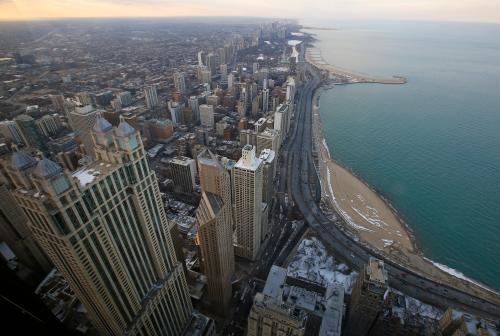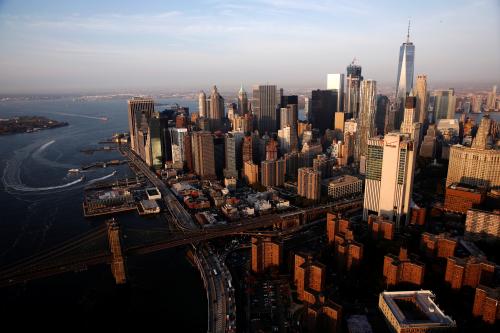Racial minorities, especially black Americans, played a pivotal role in Barack Obama’s 2008 and 2012 presidential wins. Now, newly released Census Bureau data confirm what many have anticipated: that both minority and black voter turnout took a decided downturn in last November’s elections— helping to compound the impact of the lower than 2012 vote margins that Democrat Hillary Clinton received in her loss to Donald Trump. Minority and black turnout was not only lower in the national statistics but also in key swing states.
The new census statistics, drawn from the Current Population Survey’s November 2016 Voting and Registration supplement, estimate the eligible voter population (citizens over age 18) along with the voter population. This allows for the calculation of voter turnout rates— the percent of eligible voters that reported voting. Nationally, there was a tiny decline in overall voter turnout since 2012: 61.4 percent, down from 61.8 percent. But the shifts by race were more substantial.
Turnout trends by race
While white turnout has long eclipsed minority turnout, the gap narrowed during the two Obama elections— reducing the differential to below 10 percent (download Table 1). Yet, the gap widened again in 2016 to over 12 percent (65.3 percent for white Americans versus 52.7 percent for minorities), due to a modest gain for white Americans and a more marked decline for minorities.
Among minority groups, black Americans showed the sharpest decline in voter turnout– 7.1 percent since 2012. At 59.6 percent, it was the lowest black turnout rate since 2000. This is notable because 2012 was the first year since records were kept that black turnout eclipsed white turnout nationally. The 2016 black turnout rate lies nearly six points behind that of the white turnout rate.


Hispanics and Asians shifted in different directions, though the turnout for both stayed below 50 percent. While many expected a strong Hispanic turnout surge in a Trump-Clinton match-up, Hispanics registered a modest 0.4 percent decline. Of the major minority groups, only Asians increased their voter turnout, though only by less than two percent. Overall, it was the decline in black turnout that weighed down the minority voter turnout rate.
One final note on white Americans: Much has been made of the strong impact that white men without college degrees made in the election of Donald Trump. While it is true that those who voted, among this group, gave Trump a substantial Republican-Democratic voter margin, the turnout of these voters had not increased dramatically, jumping from 54.8 percent in 2012 to just 55.8 percent in 2016 (download Table 1). The turnout for these men was markedly lower than it was in 2004, when George W. Bush beat John Kerry. It was also four points below that of white women without college degrees, and more than 20 points lower than white men or women with a college degree.
Voters became only slightly less white
Another way the November 2016 election differed from its immediate predecessors was in the modest magnitude of change in the racial profiles of voters. It is certainly the case that the eligible voter population has become more racially diverse over the past four elections. The white share of eligible voters declined at about two percent per four-year period—from 75.2 percent white in 2004 to 68.9 percent white in 2016. During this time each of the major minority groups increased their shares, especially Hispanics as younger members of these groups became aged 18 and eligible to vote.


The profile of voters tend to be “whiter” than that of eligible voters because, as shown above, eligible white American voters turnout to vote at a higher rate than the combined minority population. Even so, the share of white American voters declined by more than two percent for each of the periods between 2004 and 2012, due to rising turnout rates among minorities.
A notable detail about the 2016 election is the very slight decline in the white share of voters since 2012—from 73.7 percent to just 73.3 percent. This can be attributed to the declining voter turnout of minorities, especially black Americans. For the first time in more than a decade, the black share of voters declined, compared to the previous election—from 12.9 percent in 2012 to only 11.9 percent in 2016. This occurred despite a small rise in eligible black American voters.
Thus, the 2016 election reversed a pattern which favored the Democratic candidate in 2008 and 2012. In both of those elections, black Americans registered higher voter turnout, comprised higher shares of voters and greater voting margins for the Democratic candidate than in previous elections. In 2016, all three measures of black voting support moved in the opposite direction.
Key swing states
Even though there was a downturn in black Democratic support in 2016, Hillary Clinton still won the popular vote with the help of all minority groups. It was the Electoral College that elected Donald Trump—who squeezed out close votes in six states: four in the industrial North (Michigan, Ohio, Pennsylvania and Wisconsin) and two in the fast-growing South (North Carolina and Florida).
Although Trump’s win in each of these states can be chalked up to the vote advantages he received among white Americans who showed up on Election Day, this was amplified by the improved turnout of white Americans compared with black Americans. As shown in Figure 2, there was an increase in the white-black turnout advantage in each of these six states.






In Ohio, Pennsylvania, North Carolina and especially Wisconsin, a 2012 black turnout advantage either reversed or was eliminated in 2016 due to declines in black turnout and, in most cases, a rise in the turnout of white Americans. In Michigan and Florida, the 2012 white turnout advantage increased. In Florida, Hispanic as well as black turnout declined markedly as white turnout rose. In fact, each of these states except Pennsylvania (where Hispanic and Asian turnout rose), registered declines in their overall minority voter turnout in 2016 compared with the previous election—a pattern which occurred in 33 states (download Table 2).
These new Census numbers show that the strong minority and black voter turnout that made a difference in electing Barack Obama in both previous elections diminished in 2016. It remains to be determined whether Obama’s performance was unique and attributable to an extraordinary surge in enthusiasm for the first African American major party nominee or whether a variety of factors, including voter suppression, helped to tamp down minority turnout in 2016. Nonetheless, Obama’s experience coupled with demographic projections make plain that racial minorities can be consequential voting blocs in the future, especially if their members can be energized nationally and in key swing states.






Commentary
Census shows pervasive decline in 2016 minority voter turnout
May 18, 2017